Lab-Tools - Bespoke
Scientific Instrumentation and Software -
Bespoke Design for Industry and Academia

Lab-Tools - Bespoke
Scientific Instrumentation and Software -
|

|
International sales of complete instrument packages have been made to the UK, France, Italy, Canada, Australia, the USA, and Japan. We are particularly knowledgeable about Nuclear Magnetic Resonamce (NMR) and Magnetic Resonance Imaging (MRI) instrumentation, but have also implemented instrumentation and software for a range of other disciplines including Ultrasonics, Fibre-Optics and SANS.
Designs are usually USB interfaced, and frequently incorporate field programmable gate array (FPGA) units to ensure high speed handling, in parallel, of the peripherals. Instrumentation can incorporate web-control and or web-monitoring interfaces, using a techique compatible with most fire-walls.
We have a wide range of existing designs that can be adapted, or we can design new instrumentation for you, so please do discuss with us designs that you may interested in commissioning.
Please E-mail us at Instrumentation@Lab-Tools.com

The R.F. processing is implemented in VLSI devices, the I.F. processing in a Field Programmable Gate Array (FPGA) device, and the A.F. processing in the PC using an Array Programing language.
Note: The RF modules are Export Controlled devices.
USB Direct Digital Synthesizer : frequency agile / sweeping: 0.001 to 150MHz, 14 bit
USB Averaging Analogue Data-Capture for Digital Scope / Transient Recorder/Averager uses : 0 to 65MS.s-1, 12 bit.
USB R.F. Digital-Receiver, with direct digital sampling of the RF, quadrature 32 bit digitally controlled oscillators, three stages of FIR filtering, digital output gain scaling, followed by optional signal processing and Transient Recorder/Averager stage: 0.1 to 32MHz (below Nyquist), 12 bit.
Optional additional front-end pre-amp module : very low noise : sub-nanovolt.Hz1/2, 120MHz bandwidth.
Optional data processing algorithms in firm-ware uploaded to a 100k gate FPGA over the USB interface.
Optional data processing algorithms in high-level array-manipulating languages.
If you have specific requirements that can be best encompassed at the design stage, please contact us regarding them : Instrumentation@Lab-Tools.com
| Hardware Design: |
Logic : now mainly using programmable devices. |
| Software Design: |
I use 8 software/firmware languages regularly, others as the need arises: |
Simple control and monitoring from over the web, without having to cut holes in firewalls or run home web-servers.
This is the first of a series of tools based on well-tested software widgets created for the Kentish music web-page www.KentFolk.com
|
To celebrate the success of the Nasa Rover "Spirit" in bringing back
colour stereo pictures of crater Gusev on Mars, the following
Stereo Panoramic Viewer was written over the next few days.
This enables viewers to stereoscopically pan around and zoom into the pictures of Mars, without needing special viewing hardware. This works for both monochrome and colour stereo panoramas.
Learn more : StereoPanorama
Written using MicroApl's AplX array language interpreter, this compact application (125 kBytes) makes good use of the array manipulation capabilities of Apl, MicroApl's implementation aiding the graphic import/display/export. |
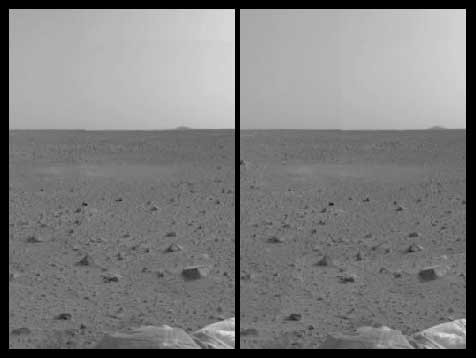
A view into part of the first B+W stereo pair of panoramic images from "Spirit"'s navigational cameras. The high-resolution cameras return panoramic stereo images in colour. |
Monotonic filterDo you have a signal that should (in a certain range) always be increasing (i.e. a tank filling) or decreasing (i.e. an object cooling) but for which the measured signal has fluctuations? Monotonic will do a good job of extracting the underlying trend, removing much of the noise, without having a characteristic 'width' like conventional averaging/bandwidth filtering algorithms. It's main disadvantage is that it is an N2 algorithm, but with current processor speeds that is usually of no consequence. |
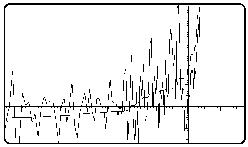
|
Transient Processor v2.1For capturing, displaying and manipulating transient laboratory data, this PC based instrument offers many advantages, while handling like a traditional oscilloscope. It is based on a standard Pentium PC, uses National Instruments cards and is programmed in LabView. |
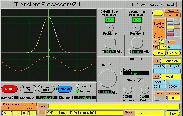
|
Convert Thermocouple EMF to TemperatureAn easy to use Windows tool to convert signals from a thermocouple to temperature. So far only for Copper-Constantan (Type T) thermocouples. Based on NIST calibration ITS90. It is programmed and compiled using LabView.This is freely downloadable, but if you use it for work or to make money, donations would be appreciated - then I might add some of the other thermocouple types and place more freely downloadable offerings on this web page. |

|
Convert Thermocouple EMF to TemperatureA unix program/filter to convert signals from a thermocouple to temperature. So far only for Copper-Constantan (Type T) thermocouples. Based on NIST calibration ITS90. It is programmed in Apl, translated to C and compiled :This is freely downloadable, but if you use it for work or to make money, donations would be appreciated - then I might add some of the other thermocouple types and place more freely downloadable offerings on this web page. |
DoD22 : Show and Analyse Area Multidetector Data for ILL D22Highly specialised, this program is placed here for the benefit of users of Small Angle Neutron Scattering Diffractometers at the Institute Max von Laue - Paul Langevin in Grenoble, France.DoD22 obtains the configuration information it needs from the stored parameter tables associated with each set of area detector data. Thus it can convert lists and ranges of measurement runs to I(q) with no further user intervention needed. It has three modes : Show, Programmable, Analyse. |
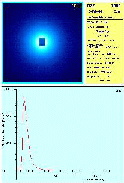
|
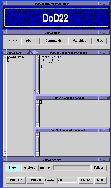
|